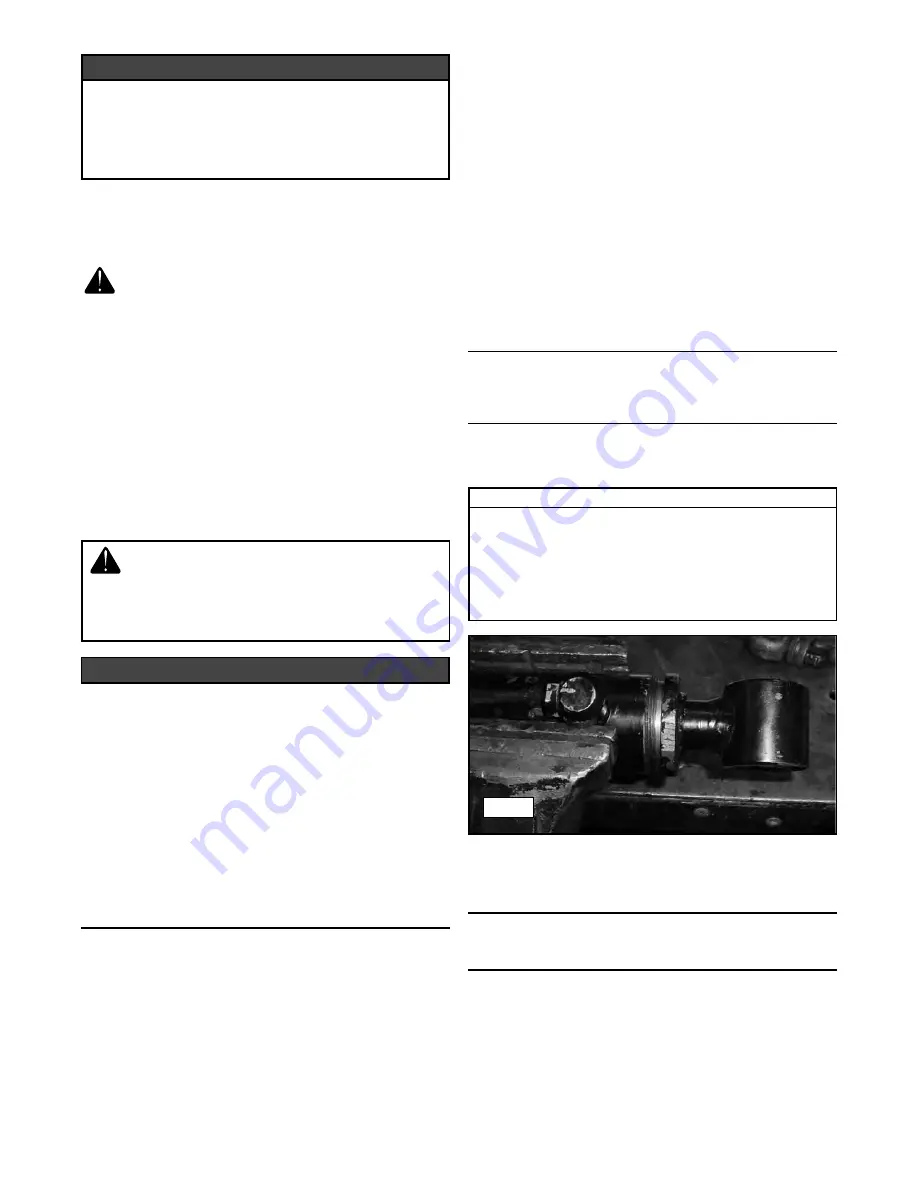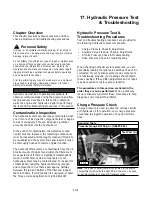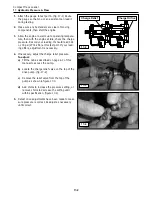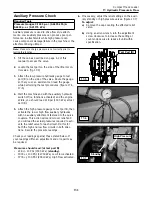
Chapter Overview
This chapter provides information on inspection, disas-
sembly and assembly of major hydraulic components.
Personal Safety
Improper or incomplete maintenance/repair of a Compact
Track Loader can be dangerous and may result in machine
damage, injury or death.
Do not attempt to perform any type of repair or maintenance
on a Compact Track Loader until you have read and fully
understood the information in this manual. Refer to the
Operation and Maintenance manual for instructions regard-
ing proper machine operation techniques before operating
any Compact Track Loader.
Prior to performing any type of service work on a Compact
Track Loader, read and understand Chapter 1 (Product
Safety) for personal safety information.
When servicing any hydraulic component, keep in
mind that any scratches or damage that can be felt
with a fingernail on surfaces that parts move, slide, roll
or rotate upon indicate a need for part replacement.
Hydraulic components must be kept extremely clean to
ensure proper function and service life. Do not assem-
ble any components that have not been inspected for
damage and thoroughly cleaned prior to assembly.
The hydraulic system fluid should be changed fol-
lowing any hydraulic component service according
to the procedure described on page 4-16.
Disassembly & Assembly
Disassembly and assembly procedures are provided
for the following components:
•
Hydraulic Cylinders
•
Lift Arm Control Valve
•
Drive Pump Reliefs
•
Drive Pump Solenoids/Spools
•
Auxiliary Pump
Note:
Procedures are provided for only those components
listed above. However, exploded parts diagrams exist in the
PT-100G parts manual to serve as visual aids in the assem-
bly and disassembly of other system components.
Hydraulic Cylinder
Disassembly
1.
With machine off and cool and with hydraulic actu-
ators relaxed, disconnect and cap hoses from the
cylinder(s) to be serviced.
Note:
When servicing cylinders, the attached components
must be supported in a manner that allows the cylinders to
be safely removed and installed. (lift arms & quick attach)
2.
Remove the cylinder(s) and secure it in a bench
vise to aid in disassembly. (figure 16-1)
3.
Place a suitable catch container beneath the rod
end of the cylinder to catch any hydraulic oil that
may leak out upon disassembly.
Required Tools
Bench Vise
Pipe Wrench
Socket or Impact Wrench
Screwdriver (blade type)
Rubber or Dead Blow Hammer
Small Pry Bar
16-1
NOTICE
Disassembly of hydraulic components should only be performed
by factory trained personnel experienced in the disassembly
and repair of hydraulic components. Components should not be
serviced during the warranty period without written instruction
from the Terex service department. Component disassembly
during this period may void the manufacturer’s warranty.
NOTICE
When servicing any hydraulic component,
make sure the machine is off and cool and
that all of the hydraulic actuators are relaxed
prior to disconnecting or removing any compo-
nent from the system.
16-1
16. Hydraulic Component
Service Procedures
Summary of Contents for PT100G Forestry
Page 1: ...PT 100G PT 100G Forestry Part Number 2076 286 Printed 8 10 Service Manual Compact Track Loader...
Page 2: ......
Page 6: ......
Page 12: ......
Page 14: ......
Page 22: ......
Page 40: ......
Page 52: ......
Page 62: ......
Page 66: ......
Page 80: ......
Page 98: ......
Page 102: ......
Page 116: ......
Page 136: ......
Page 138: ......
Page 140: ......
Page 141: ......

































